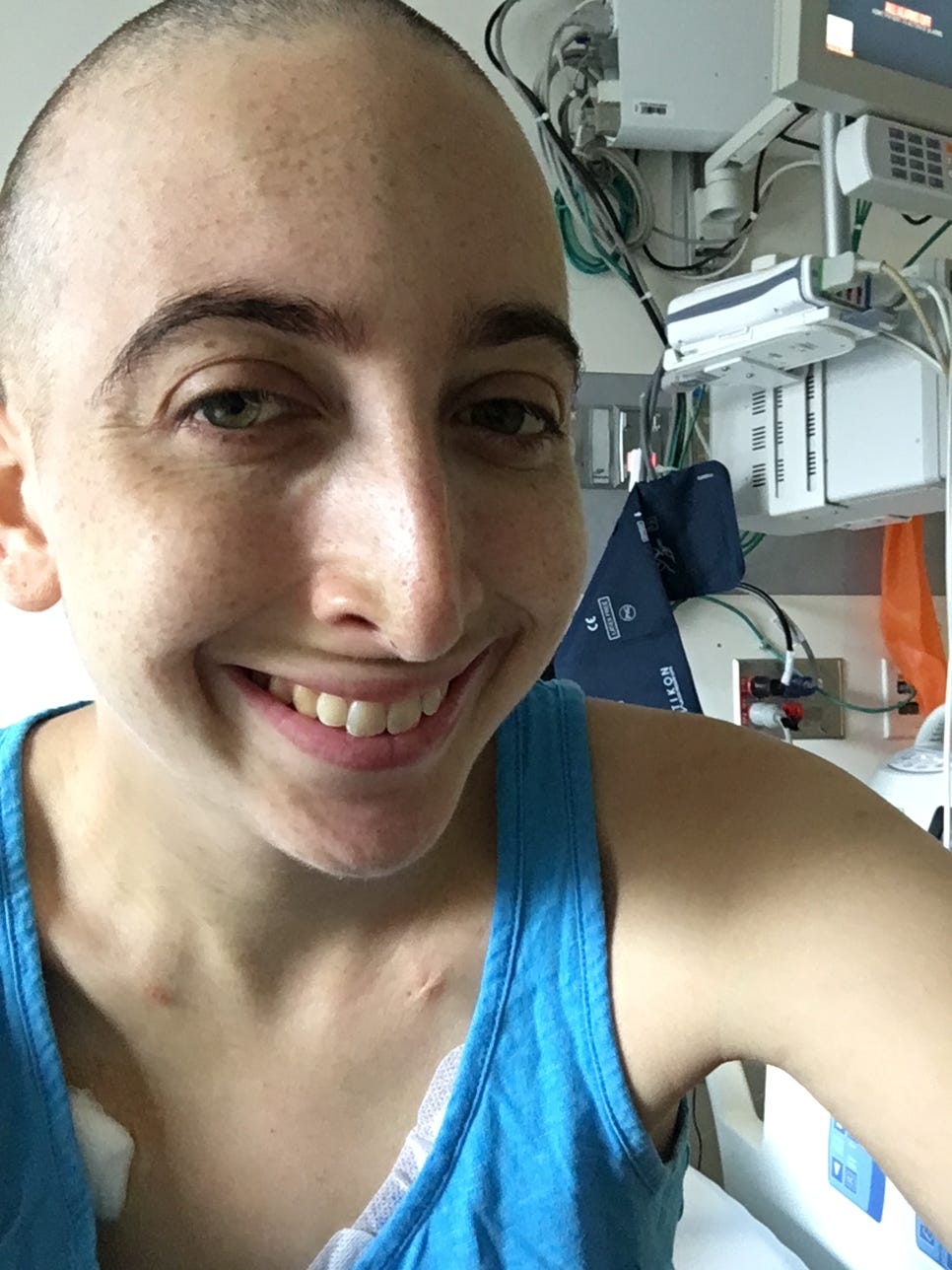When I first got sick, well-meaning people would exclaim, “But you look so normal!”
My Aplastic Anemia, a bone marrow disorder, did not cause any physical deformities. In fact, at first I dropped weight, which pleased both me and others, until I made the connection between my newly slender figure and the constant fatigue and nausea that had plagued me since that winter.
As so often happens, it took treatment to cause the physical manifestations of disease. Excessive cyclosporine made me hairy and bizarrely golden, like a self-tanning chimp. My gums expanded, which strained my upper lip when I smiled, registering the expression as more of a grimace. Later, during bone marrow transplant, the chemotherapy caused patches of hair to fall out; I asked a nurse to give me a preventative buzz cut.
Now, the only visible scars that remain are on my chest, a tiny lopsided pair of marbled galaxies where, for a time, plastic tubes had transported blood and poison into my veins. These scars are hard to see even if exposed, which they rarely are, and so, for the most part, I look like a normal thirty-five-year-old woman.
In the years immediately following the transplant, after my hair grew back, I was confused by this discrepancy. How was it possible to have my entire immune system replaced by a stranger’s, but carry no visible scars? How is it possible to go through two years of treatment, to become as intimately familiar with hospital rooms and 3 a.m. pills as I did, and walk away without so much as a mark on my face?
When I was in grad school, I didn’t want anyone to know about the disease, but I also wanted to shout it in their faces.
“I’m not even supposed to be here!” I wanted to yell. I was convinced that if my career hadn’t been interrupted by illness, I would be a high-flying political operative, doing communications for ever more prominent politicians. But I couldn’t return to my career in politics, not just yet. I thought the stress of it might kill me, especially when I already thought that every heartbeat, every twinge was a sign that the disease was back. My doctor insisted that this was vanishingly unlikely, but hadn’t the whole thing been unlikely? I was no longer reassured by the odds.
For a long time, the disease felt like the most salient fact about my life. I half-wanted conversations to begin with, “Hi, I’m Sarah and I just had a bone marrow transplant.”
Instead, because there was no physical prompt to ask, few people knew. I had to choose to reveal the information, which I did selectively. Often, people would either shrug or want to delve into uncomfortable details.
Now, eight years after the transplant, it’s no longer the most salient piece of information about my life. And yet - it is still a relevant piece of information, one that most people who meet me will never know.
There was a time when, upon introduction, I would have registered as sick. Bald and pale and wearing a mask before it was commonplace, anyone could have seen that something was wrong. Now, I look healthy. And, as deceptive as appearances can sometimes be, I am healthy.
My only physical scars are minuscule and hidden; the rest, the grooves in my brain where my neurons chart paths of fear, can’t be seen. Mostly, I’m grateful for that; and at times, I wish that I had some sort of physical symbol of pain endured in those years.
Instead, these invisible scars are all I have to show it.




